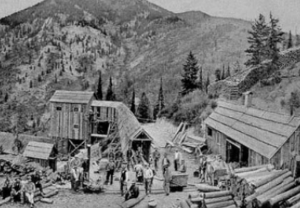The Making of the 50 States: Idaho
Part 2: The Rest of the Story Congress established the Idaho Territory in 1863; the original capital was Lewiston. Mining and settlement continued, accompanied by the establishment of newspapers the Golden Age, the Idaho Statesman, and the Boise News. Boise, established in 1863, became the territorial capital in 1864. The territorial legislature proposed the State of Columbia in 1866; Congress rejected the proposal. As with many other states, the increase in the number of American settlements in the Idaho territory resulted in conflict with Native Americans. That conflict was particularly violent in the 1870s, as settlers fought against members of the Bannock, Nez Perce, and Sheepeater tribes. 
The completion of the Transcontinental Railroad in 1869 accelerated settlement of Idaho, as did the discovery of more gold in more places. Franklin was the location of the territory's first telegraph office, in 1869; Hailey, in 1883, was the location of the first telephone service. Electricity had come to the mining town of Ketchum the year before. It wasn't just gold that drove Idaho industry. Silver City was the name of one settlement, which grew up around both gold and silver mines. Prospectors discovered silver in the Coeur d'Alene area in 1884, and that would turn out to be the country's richest deposit. Exploration and settlement of northern Idaho ramped up. 
The development of industries and settlements in the territory included a drive for statehood. Idaho residents drew up and ratified a state constitution and applied to Congress for admittance to the Union. Idaho became the 43rd state on July 3, 1890; the capital was Boise. First page > In the Beginning > Page 1, 2
|
|
Social Studies for Kids
copyright 2002–2024
David White




